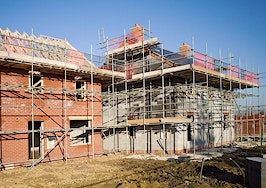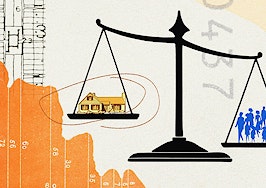Residential construction spending rose in February, the fifth straight month of increased spending in the sector, the National Association of Home Builders said Thursday.
The 1.1 percent increase was 16.6 percent higher than a year earlier, and followed a 1.1 percent increase in spending for January. Spending stands at an annual rate of $850.6 billion.
The steady increase has occurred despite widespread supply shortages, tight labor markets, rising inflation and the volatile cost of wood. Demand for new homes has remained strong.
The increase was attributed to spending on new home construction, both single-family and multifamily. Spending on home improvement declined 0.7 percent for the month after rising 0.9 percent in January.
The NAHB finding largely matched (but didn’t mirror) that of the U.S. Census Bureau, which reported single-family residential spending rose 2.5 percent over January and 20 percent year over year.
Spending on both new construction and home improvement took a brief dip amid the immediate onslaught of the COVID-19 pandemic but have both risen steadily in the months that followed.
The pandemic also saw the wild volatility of the price of wood, and trades groups including the NAHB have been lobbying the Biden administration to make moves to lower supply costs, including for wood.
Wood framing prices are dropping below $1,200 per 1,000 board feet from a high of just over $1,600 in May.
Home building material costs are up 20 percent year-over-year, NAHB Chairman Jerry Konter told the White House last month.
“If our trade protectionist policies are not creating domestic jobs or increasing domestic production, then it’s time to revisit our trade positions,” Konter said at the time. “Few things would have a more immediate impact on lumber markets than a swift resolution to our ongoing trade dispute with Canada over softwood lumber.”













